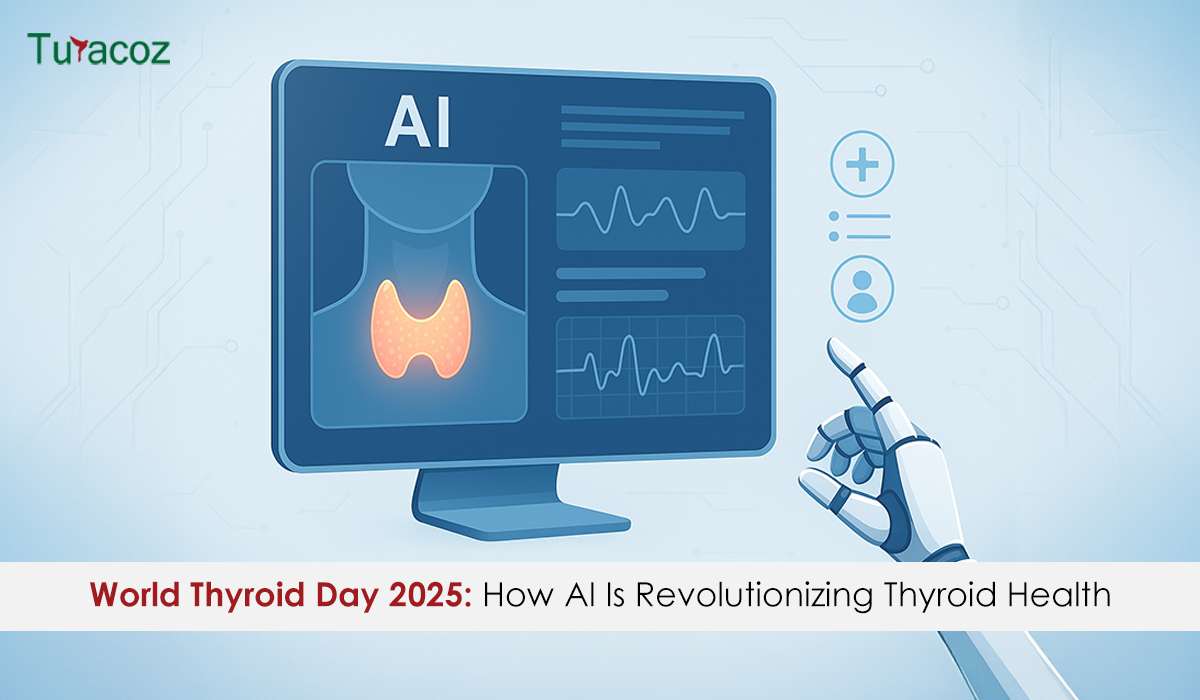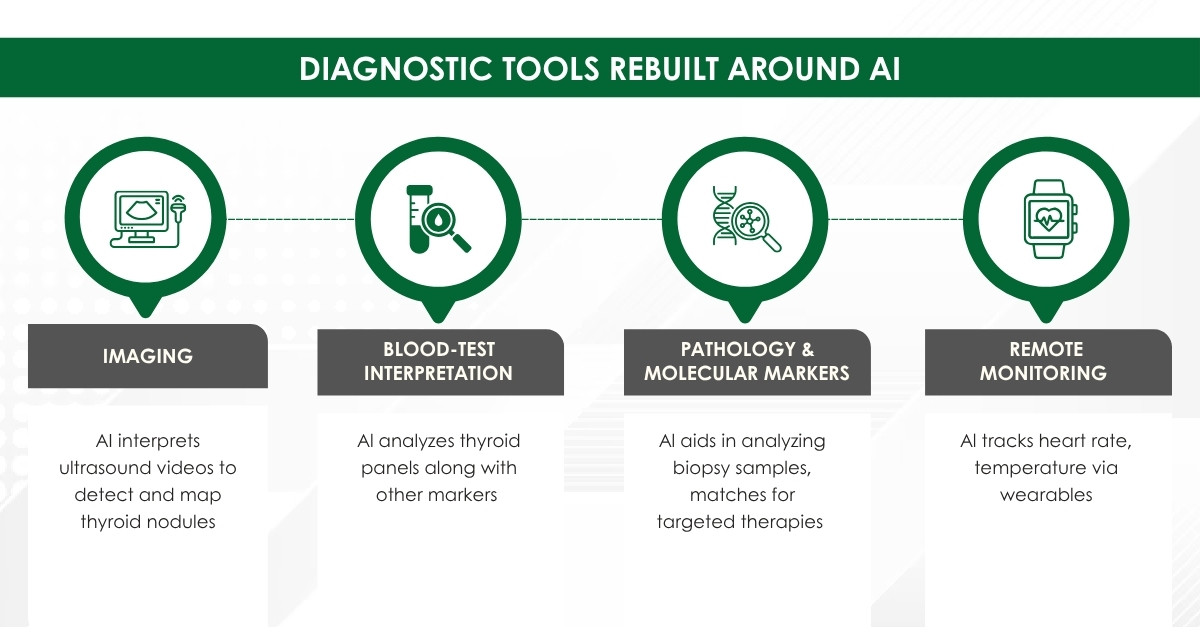
World Thyroid Day invites us to appreciate the tiny, butterfly-shaped gland with a big job in managing our body’s energy, growth, and mood. This year, the spotlight shifts to a very 21st-century ally, artificial intelligence (AI), and how it is reshaping the way clinicians detect, treat, and even prevent thyroid disorders such as hypothyroidism, hyperthyroidism, Graves’ disease, Hashimoto’s thyroiditis, thyroid nodules, and thyroid cancer.
AI in early detection: Who needs it the most
Machine-learning models trained on millions of electronic-health-record lines and lab reports can now flag people at risk of developing clinical thyroid disease months before the first symptom.1 A 2025 multicenter study built an interpretable ensemble model that accurately stratified heart-failure patients with co-existing thyroid dysfunction for one-year mortality and hospital-admission risk, outperforming conventional scores.2 By linking abnormal thyroid stimulating hormone (TSH) traces with age, comorbidities and medications, the system directs scarce clinic slots to those who need them most.
Diagnostic tools rebuilt around AI
Imaging: Deep-learning convolutional networks now review ultrasound videos, color-code suspicious tissue, and even render 3-D nodule maps on-the-fly. A study of 4569 cases found that the 3-Dimensional Total Nitrogen Visualization (3-D ‘TN Vis’) model, which was validated using data from seven hospitals, improved radiologists’ diagnostic accuracy by raising the area under the curve (AUC) from 0.66 to 0.79 and helped junior radiologists perform at the level of their senior colleagues.3 Another 2025 paper reported that “ThyroNet-X4 Genesis,” surpassed mainstream models in classifying sub-centimeter nodules.4
Blood-test interpretation: AI tools digest full thyroid panels – TSH, free T4/T3, antibodies – alongside “hidden” markers hidden in routine blood counts.
Pathology & molecular markers: Computer vision is also assisting cytologists reading fine needle aspiration slides and matching tumor genomes to targeted therapies. The same codebase that spots lung mutations now guide the choice of kinase inhibitors in regenerative medicine trials for recurrent thyroid cancer.
Remote monitoring: Wearables that track heart-rate variability and basal temperature can now feed AI predictors. In a 2023 cohort, resting-heart rate streams from smartwatches predicted thyrotoxic episodes with 86.14% sensitivity and 85.92% specificity, weeks before lab confirmation.5 For patients in rural areas, merging these data with tele-endocrinology portals means rapid dose tweaks without leaving home.
Limitations & Ethical Considerations of AI in Thyroid Care
While AI-driven tools promise faster detection and personalized management, several cautions remain.
Ongoing prospective validation, algorithmic auditing, and explicit human oversight are therefore essential to translate impressive pilot results into safe, equitable real-world care.
Practical ways to observe World Thyroid Day
The road ahead
AI will not replace endocrinologists; it will empower them. Imagine chat-bots that guide newly diagnosed patients through lifestyle tweaks, or ultrasound probes that whisper malignancy scores during a scan. As datasets grow to include genomics, microbiome signals and environmental exposures, guidelines could evolve into continuously learning care paths, delivering precision medicine to the people living with thyroid disease.
On World Thyroid Day 2025, Turacoz celebrates not only the promise of silicon and code but also the power of informed citizens. By pairing innovative AI algorithms with classic public-health wisdom, we can ensure that the next decade marks a turning point in thyroid care.
References: